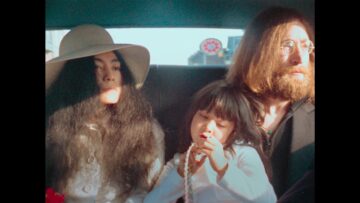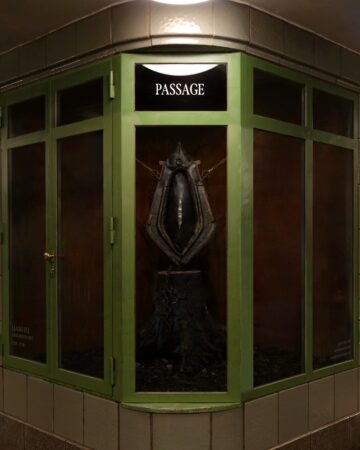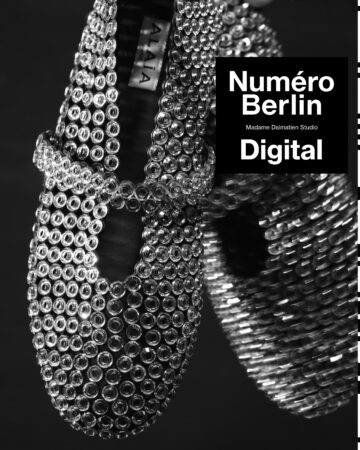
TO WATCH: “ONE TO ONE” BY KEVIN MACDONALD
This documentary feels like reliving a time through the eyes of Ono and Lennon.






As part of its extended “Summer of Youth” campaign, German telecommunications company Telekom and its cultural division, Electronic Beats, have once again organized press trips to primarily Eastern European cultural capitals.
As part of its summer campaign “Summer of Youth”, which was extended from the previous year, the German telecommunications company Telekom and its cultural division Electronic Beats once again organized press trips through primarily Eastern European cultural capitals on the ongoing mission to connect local scenes with international attention and world stars from subcultures.
In addition, 2024 marks the centenary of the death of the most discussed German- speaking author of the 20th century: Franz Kafka. His most famous photo was taken at the age of 40, around a year before his inevitable death from tuberculosis. He still looks like a young man, although his cheeks are sunken in, his expression serious. The motif is well-known from encyclopaedia entries, stamps and book covers. Above all, it is part of the legend of the uptight Kafka, misunderstood by the world and bathed in melancholy as a small child, as the world is supposed to remember him today. The Kafkaesque. Yet there are sufficient sources to show that Kafka was very much turned towards life and knew how to share it. Probably the best-known example is his passionate affair with Milena Jesenská, the first translator of his texts into Czech. The journalist Jesenská was from Prague, just like Kafka. Reading their correspondence and looking at the photos taken of him at this and other times, we get to know a cheerful, capable and, above all, highly emotional Kafka in the setting of Prague. No other city is associated with the writer as much as the Czech capital.
A city that doesn’t impose its millennia-old history on anyone, doesn’t talk anyone into it, but has picked up speed in the quiet slipstream of Berlin and has probably long since overtaken the former cultural center of Europe. Kafka should remind us that even a lifelong photo album of smiling pictures can be overshadowed if your most famous picture is the last one taken before your death. As long as it fits the legend.
Telekom Electronic Beats has set the course for a four-part short trip through the youngest generation of creatives in the former royal and imperial city with its festival, which was completely relocated to FUCHS2 at short notice due to blatant rain.
Eva Che
A much-heard name in the Prague scene is also buzzing through the streets of Berlin. Eva Che is an icon, model and chef. She was one of Sven Marquardt’s models in the “11+1” exhibition at the Berlin Art Week. For the exhibition, audience curator and photographer Sven Marquardt portrayed twelve personalities from Berlin’s nightlife scene who belong to a “new generation of techno”, as Marquardt himself called them. Eva Che, whose culinary art in particular is a cornerstone of Prague’s (and Berlin’s) cultural world, embodies what characterizes this new generation.
Eva’s parents – father a chef, mother a cook – are from southern China, her cuisine is Cantonese-influenced. The spice blends are inspired by her father. That’s why her events are called CheHub – the spice of the Che’s family kitchen as a convivial place: a hub. What exactly happens at the “CheHubs”? Che has many words for what it is: catering, made-to-measure, food event, get-together. She cooks by invitation, privately and publicly. Primarily in Berlin and Prague, but also internationally. Pop-up stores where she sets a menu (“one course, not more”), invitation-only events at fashion brands, companies and private individuals on request and performative events in collaboration with artists, musicians and designers. But in all of these formats, she is primarily concerned with one thing: the social component, the community. Eva Che does not hide in a kitchen, but cooks in front of everyone. Not to turn it into a show in which everyone remains devoutly silent, as in contemporary performances. Che is part of the community that comes together at these events.
Michaela Fenkl
This young artist is literally leaving her mark in Prague and around the world. Michaela Fenkl is a lyricist and visual poet. In the tradition of Egyptian hieroglyphics (or, in more recent history, in an intellectual relationship to Cy Twombly and Roland Barthes) and inspired by Japanese characters and manga, Michaele Fenkl turns writing into images and images into characters. The sign in its cultural-historical significance detaches itself from its simply descriptive character and sublimates what is described – both in the sense of the thing described and in the sense of the underlying material. Fenkl paints/writes on canvas, on clothing, on skin. Her typographic style is reminiscent of incised runes, the gestural moment is exposed in the writing. At the same time, the objects, drawings and graphics look like symbols – written images. Fenkl has already published three books, her tattoos adorn the skins of people all over the world and as a creative director and artist she has also entered into fashion collaborations, most recently with Vans. Visiting her studio apartment feels like looking into her latest book “Melancholic Rodeo” – it smells of Palo Santo, canvases with pictures and pieces of text hang, stand and lie everywhere like narrative fragments, loosely arranged in the room, ready for association. In the kitchen, a red retro fridge stands opposite a red-framed, single-row wall shelf, next to which hangs a red canvas that reads “Your Beauty is not mine”; individual tiles in the adjoining kitchen unit are also red. Michaela Fenkl is one of the mavericks in the genre game, whose works will always be found where you least expect them.
Nookart
On the 1st floor at 37 Vodičkova Street in Prague 1, the Nookart Gallery is located in the heart of Prague’s New Town, surrounded by restaurants, sights, cinemas, bars and life. Apartment galleries are not yet as popular in Prague as they are in Berlin, jokes Jan Reindl, the curator of the current exhibition “Let’s Get Naked”, when the press tour group arrives. The current show presents a generation of painting graduates from the renowned Academy of Fine Arts in Prague. Naked bodies, garish colors but also poetic black and white photography bring together such a dazzling variety of the young art scene on less than 100 square meters that the gallery’s program must be followed in the future if you want to keep an eye on developments in Prague’s visual arts scene. Nookart was founded by Eliška Hradec Chomisteková and Michaela Němečková, who brought Jan Reindl on board as guest curator, who will also curate the upcoming exhibitions: A look at the young guns of contemporary Prague photography, participation in the upcoming Design Biennial – “there’s still a lot to come,” Reidl charmingly jokes away thoughts about the future in order to get back to the here and now. Just as it should be for a contemporary art gallery.
LAFORMELA
“Born in Czechoslovakia.” . Hence the “About Us” section of the brand’s website. LAFORMELA was founded in 2010 by Miroslava Kohutiarová and Antonín Soukup and has since become one of the most influential and popular brands on the Czech and Slovakian market. Their style is bold, edgy, graphic and colorful. LAFORMELA only uses materials from the Czech Republic and Europe for its clothing. For the young brand, sustainability is based on the demand for high-quality materials and production cycles that encourage local structures. This is another reason why LAFORMELA is no longer only represented at Prague Fashion Week, but also in international showrooms in Milan, Paris and other European fashion cities. For years, the design studio and the associated brand have been honored with prestigious awards and features in leading fashion magazines, including Vogue CZ, Vogue Italia, Elle, Harper’s Bazaar, Highsnobiety, Dazed, and many more. In addition to their collections, LAFORMELA also dresses models, musicians and artists for one-off events – for the perfect Prague look, the unspoken statement.

This documentary feels like reliving a time through the eyes of Ono and Lennon.

With his latest installation "SPINE BOUNDARY" at Hermannplatz, Berlin, Chinese born Artist…
